History originally published in Automobile Magazine, June 1993
No one had expected this much of the first timers at Le Mans, not even the entrants themselves. Yet here they were, a couple of American sports car crazies and a highly modified Crosley Hotshot, holding their own against experienced Index of Performance players and slipping past the race-favored Talbots in the corners.
Even if the Talbots did thunder past in a cloud of spray on the straights.
This was June 1951, when most American attention was focused on Cunninghams – big white cars with blue stripes and Chrysler Hemi engines, one driven by Briggs Cunningham and George Huntoon, another by John Fitch and Phil Walters. But the Crosley, looking like a caricature of a dirt-track midget with fenders and lights, was a solid contender for the index. George Schrafft, teamed with Phil Stiles and first out, had it locked in third gear and sliding, tail out, in the corners like a county fair rimrider. Sideways into history, that’s how it seemed. Yet position after one, two, or three hours doesn’t mean much in a twenty-hour race, and the enthusiasm of the competitors, and not that of the contingents of U.S. serviceman cheering their countrymen, was tempered by that reality.
Reality is a strange word to use in this story. Barely one half year before, the idea of raising at Le Mans had been a modest proposal over martinis at Stiles’s Palm Beach home. With only gentle persuasion by Stiles’s wife, Schrafft and Stiles drafted a letter to the Automobile club de l’Ouest, the organizing body for the French circuit, requesting entry for the Crosley factory team.
It wasn’t entirely improbable. Fritz Koster and Bob Deshon had won the first Serbring race, a six-hour enduro on December 31, 1950, on index in a Hotshot that was stock but for a small racing windscreen. In early calculations, Stiles and Schrafft figured that a specially bodied Crosley—one looking something like a cycle-fendered Frazier-Nash Le Mans Replica—ought to do much better than a stock Hotshot, if not streamlined DBs and Monopole-Panhards that waited in France.
But Le Mans required an official factory entry, and Stiles and Schrafft were only a couple of amateur racing drivers. Of course, everybody was back then; the Sports Car Club of America was vigorous in eschewing that nasty old professionalism. But some were more amateur than others, and Schrafft, of the New York restaurant and candy family and owner of a Palm Beach import-car dealership, and Stiles, Schrafft’s general manager, had only a few local races under their belts.
So perhaps no one was surprised as they were when the acceptance of their “factory entry” came back from France. The only thing to do then was to inform the factory, which they did with a letter to Powell Crosley. Surprisingly, he went along the idea. Schrafft and Stiles would be supplied with a Crosley Hotshot—at factory cost—and engineering assistance. Schrafft and Stiles left immediately for the Crosley factory in Cincinnati, picking up one Hotshot (less its body) and taking it to Floyd H. “Pop” Dreyer, a well-known Indianapolis builder of circle-track racing cars, for a special Le Mans body.
Meanwhile, documents were filed with the American Automobile Association contest board, the U.S. affiliate of the FIA, so the car would be accepted in France. Magnafluxing of parts, required for AAA certification, was performed at the Cincinnati airport. Crosley engineers work directly with Bendix on special brakes for the car.
Engine development was done on the factory dynamometer in Cincinnati. The last “navy” crankshaft—a one-piece forged military-spec unit—was substituted for the built-up crank used in production Crosleys. Exhaust valves were stellite faced, and rotators were used on both intake and exhaust valves. Ports were polished. A Harmon & Collins distributor replaced the flimsy stock unit. From Braje came a leakproof cast iron cam cover, a deep, finned-aluminum crankcase, and a “banana type” exhaust manifold with no preheater. Grant Piston Rings made a set of low-friction piston rings especially for the project.
Breathing tests showed a pair of downdraft Carter carburetors outperformed sidedraft carbs, but the chromed intake stacks had to protrude through the hood. Camshafts from Iskendarian and Harmon & Collins were tested against Crosley’s; the Isky cam appeared to be inferior until it was determined that it had been incorrectly indexed. Properly timed, it was much better.
How might better? They were practically dancing around the dyno. The 44-cubic-inch pushrod four pumped up 42 bhp at 6000 rpm, as fast as the dyno would go. Almost one horse per cubic inch was very good for 1951. But the best part was that the engine was safe up to 7500 rpm and, according to Stiles, really didn’t come on its cam until after 6400 RPM. They never would learn the actual maximum bhp of the little engine.
Meanwhile, Pop Dreyeer was working on the body, although he didn’t leave it at that. Stiles remembers the first thing he did was heat and bend the front axle and make the other wizard changes to improve handling.
Stiles had given Dreyer a photograph and drawings of the Frazer Nash Le Mans Replica, inarguably a good -looking car. But Pop built dirt-track cars and had never before built anything with fenders. His first front fenders weren’t bad, but the rears look like something from a tractor. On the nose was one of Dreyer’s cast iron grilles and, above that, a Crosley badge that could be read without glasses. The body wasn’t completed when Schrafft and Stiles arrived to pick up the car, and they spent a week helping Dreyer finish it. Pressed for time, they left with the aluminum body still unpainted, driving the car back to Cincinnati under power of the standard hotshot engine with which it had gone to Indianapolis.
Back at the factory, they put the racing engine into the car. Stiles remembers the admonition he received. “Powel Crosley said, ‘You can turn 7500 RPM for twenty-four hours, but for God’s sake, don’t shift gears.’
“I said, ‘What do you mean, don’t shift gears?’
“He said, ‘I get this complete transmission from Borg-Warner, in the case and ready to bolt on, for $12.50. It isn’t all that good.’”
Crosley was wrong, says Stiles. With no more than strengthened detents, the transmission would prove flawless as long as it was in the car. They kept it in high at Le Mans but would later shift it with no problems.
At this point, they still had to get the car to Le Mans, so they loaded the little racing car onto Powell Crosley’s modified boat trailer, and hooked it all to Schrafft’s Aston Martin DB2, and headed for New York. When they reached the Pennsylvania Turnpike, the Crosley was unloaded for a last-minute break-in (and some much needed seat time) on the highway. Schrafft took off in the Crosley, Stiles futilely trying to keep up with him in the Aston and trailer.
After an overnight at York, Pennsylvania, with Stiles’s relatives, they motored on to New York and J. S. Inskip’s car dealership. There, in the hands of shop foreman Alfred Momo, the car was finally painted and upholstered. It was all blue with white upholstery because, says Stiles, the traditional American racing color in Europe was white with a blue frame, and since no frame showed on the Crosley, well, blue paint happened to be available.
Then it was off to the French Lines pier. There Stiles and Schrafft with wife and girlfriend, West Palm Beach motorcycle mechanic Hal Kernan, and the team’s pit crew joined the Crosley for the trip on the SS Liberté. At Le Havre, George Schrafft was able to ease the car past French customs officials by saying, “Les Vengt-Quatre Heures du Mans,” and the pair drove off towards Le Mans in the Crosley and the Aston. Powell Crosley’s trailer was left at the pier. Stiles is still not sure whether they recovered it on the way home.
Sunset found a weakness that would require correction before the race: headlights that even 44 cubic inches of Crosley could out run. Rather than drive on slowly, they stopped at a small inn for the night. Arrival at Le Mans the next day, “at high noon,” caused considerable consternation at the officials’ table. As no photograph had been forwarded, a stock -looking Hotshot had been expected, not, as it became known, “La Biplace Torpédo.”
Running on the highway and testing at Le Mans proved that the seat needed to be lowered. This was promptly done, and the windscreen was trimmed to match.
The Cunningham team help make a larger gas tank. The headlight problem was more difficult. Marchal wonthe competition with Cibié to put new lights on the car (and advertising rights resulting therefrom), but they were too much for the car’s stock generator. A larger Marchal unit was installed, but Schrafft and Stiles would discover only later that it had plain bearings.
Race morning was chilly and wet. Stiles loaded the team’s tools into his wife’s dressing case (until then, they had been carried inside the cars) and went to the track. Several more crewmen had been recruited, including an American soldier and a couple of Brits.
It was still wet at four p.m. George Pratt took the first shift, running across the track to the Crosley with a large black “59” painted in the white circle on side. After the first few rounds, Schrafft was able to maintain constant 73-mph laps without exceeding 6000 RPM, and Stiles calculated they would soon lead in the Index of Performance. The race strategy was to increase maximum revs by 100 each hour to increase pressure on the competition. They later learned that the other index competitors were hastily changing their plans even before La Torpédo hit the first hourly speed increase.
When Stiles calculations showed it was time to refuel, he flagged his partner in. He squeezed himself into the cockpit; Schrafft slipped out, shouting that the generator had quit. Stiles had to keep it running while they figured out what to do. But there were no parts for the French generator, and, according to the rules, it had to stay on. The ammeter read six amps’ discharge, and after “lights on,” it would read seventeen.
Still Stiles maintained the pace, exchanging shrugs with his crew as he passed the pits. It was one of those times when you simply await the inevitable. As the charge in the battery dropped, the electric tach began behaving erratically. Only a few laps were left until ignition would start to break up, but Stiles determined to make the most of them. The Firestone Ascot midget tires mounted on the rear wheels let the Crosley hang out its tail in controlled power slides like nothing ever before seen at Le Mans. Stiles barely had to lift through the esses, bearding a mighty Talbot in its den. Stiles says the driver, shocked at being passed by such a small car, turned and stared at Crosley as he swept past it on the straight.
No one outside the Crosley pits knew of the team’s dilemma, and with Stiles now overtaking the Monopole-Panhard and DBs with a 10-mph advantage, the French small-bore specialists began radically rethinking their strategies. If the Americans could keep this up 20-4 hours…
But he couldn’t, and if things were bad, they suddenly became worse. Stiles remembers that it was in the stretch between the Mulsanne and Arnage corners, at that time narrow and rough and requiring much concentration, when a loud noise was followed by fumes, smoke, and fire. It poured from under the Crosley’s hood, blinding Stiles as he was closing on a slower car with faster cars just behind. Grabbing the seat cushion beside him, he used it to deflect the smoke. Traffic managed to avoid stricken Crosley, and Stiles was able to drive it back to the pits.
The hood was opened and the fire extinguished, but the engine compartment clearly had been on the losing side of a war. The plain bearings on the generator had seized, and the fanbelt proved stronger than the generator mount, breaking it and wrapping the generator in wires. The whole mess had shorted out and gone up in smoke. At this point, a normal person would have given up, but Stiles, having crossed an ocean to race, would do just about anything to run a few more laps. Burnt wires were snipped and taped and hoses were reconnected, bypassing the water pump, now useless without a belt. They would rely on thermosiphon cooling even though the radiator was lower than the engine, the opposite of what it should be for best effect
Stiles leaped back into the car and shot out the pits. But the 6000 revs weren’t there anymore, and the temperature needle quickly climbed to the peg. It was hot to the point of boiling, and the paint on the engine block began to scorch, but Stiles stayed out. It was more than a matter of a few more laps. It was now a fight for the dignity of the Crosley that had shown so much heart. Not until Stiles felt the engine tightening up did he bring it in and call the race quits. At 9 o’clock, a mere five hours into the race, George Schrafft and Phil Stiles had become spectators.
Normally, the story would end here, but again we’re not dealing with normality. An American generator had been air freighted from Cincinnati, and it was installed two days after the race. The hoses were reconnected properly, and as much of Stiles’s and his wife‘s wardrobes as would fit were crammed in. They had come to Europe, and they were going to see more than a few roads around Le Mans. The Crosley was the only car available; Schrafft had already going touring the Aston.
The trip was, for the most part, uneventful, although Mr. and Mrs. Stiles had to dive for shelter whenever it showered. It was commonplace but for replacing a bum fuel pump in tiny Tiefencastel, Switzerland, with a Chevrolet pump shipped from Geneva; the Crosley’s block had to be chiseled out to fit. It was ordinary but for slipping in among the Alpine Rally, much to the confusion of judges confronted with two number 59s and the astonishment of the driver of an Allard passed by Stiles in a series of downhill switchbacks.
Then it was back to Le Havre and the United States, where the Crosley was used, mostly by Schrafft, for local racing events. Both drivers entered and placed second in class at Sebring in 1952, easily finishing and suggesting what the car might have done at Le Mans with only minimal development. But there would be no return to Le Mans for the Biplace Torpédo.
Schrafft replaced the Crosley/Borg-Warner three speed transmission with its torque tube drive; he put in a Fiat four-speed, life-axle setup, and Stiles has yet to forgive him. It ruined handling and stability, says Stiles. Once, in a Le Mans-type start at a race, the driveshaft’s fabric universal joints broke before the car crossed the start line, officially make it a DNS. Yet in 1954, Schrafft drove the car, listed as the Palm Beach Crosley, in a race at Hunter Air Force Base in Savannah, Georgia. He took second in class, ahead of Porsche-mounted Dr. Dick Thompson. Stiles and Schrafft teamed up at Sebring in 1954. There, Stiles would perform his first differential replacement, running back to the pits for parts and instructions and then digging the sand from under the axle for room to work. But even today, Stiles is frustrated with Schrafft. Upon taking over the car, he drove too hard, says Stiles, dooming the crude field fix and the Crosley to a DNF. Stiles’s last ride in the car was a second-place finish in a 1957 SCCA event.
In the late Fifties, business called George Schrafft back to New York, and the Crosley went to a Florida junkyard. It was found and restored by Hal Thompson of Lake Worth, Florida, who later sold it to Ohio racing-car collector Donald Snyder. Snyder sold the car to present owner John Aibel of Mendham, New Jersey, in 1985. It is largely in original condition but with the Fiat transmission and without the Le Mans engine—a standard Crosley in its place. The original white upholstery is worn, and a modern tachometer has been mounted on the steeringcolumn for vintage racing until the original is repaired. And when Aibel finds one, a Bell Automotive steering wheel will replace the standard Crosley wheel on the car now.
Meanwhile, Aibel races the Crosley at selected East Coast events. It’s a long way from Le Mans and a long time since 1951, and the Crosley will never be a Cunningham. Yet Phil Stiles and George Schrafft nearly rewrote history in a small way, and that’s the reality of the Le Mans Crosley, martinis, and bench racing around the kitchen table.
For additional details, photos, plus especially info on the Le Mans Crosley’s ownership, visit carscan’s report.







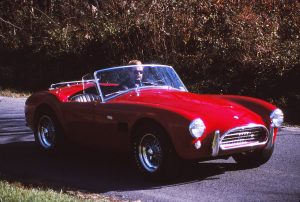
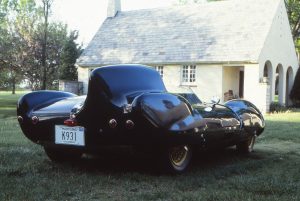
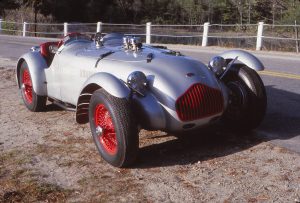
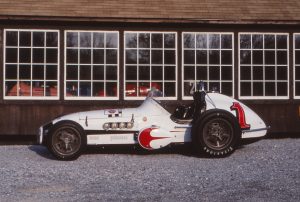
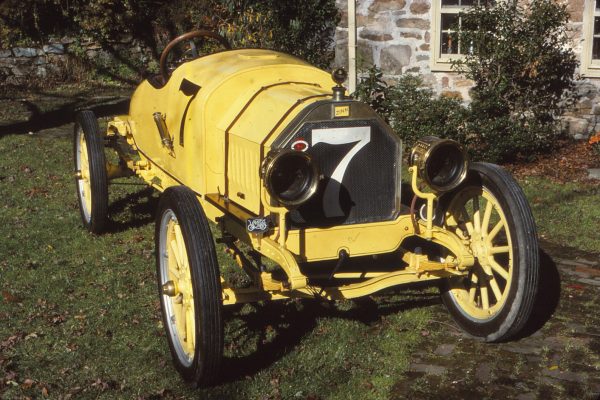
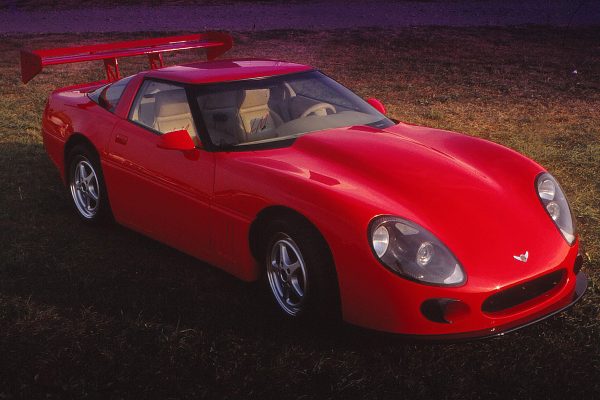
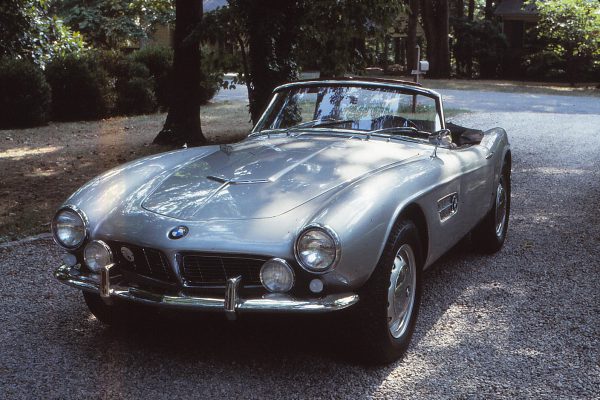
Great story. Always thought that the Crossley was a bit of a joke, much like the American Bantam, however, this story has opened my eyes a lot. Pity about the generator otherwise the story might have had a happy ending.